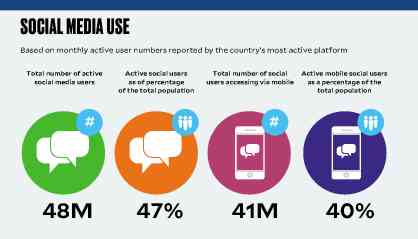As businesses grapple with the challenges of social technologies, media democratization, and the dizzying changes in consumer attention and societal expectations, more marketers are complementing marketing and advertising campaigns with public relations.
In an environment where consumers and stakeholders do not just want to receive information and are more likely to demand conversations to improve the consumer journey, PR is king.
This was one of the most important takeaways in the recently concluded 23rd PR Congress of the Public Relations Society of the Philippines (PRSP).
This year’s main theme— “Global Speak: Are You Ready to Take the Global Stage?”—is quite appropriate considering current realities: 1) global brands and companies are using PR to engage consumers as PR professionals become fluent in delivering authentic brand experience and 2) local companies are putting premium in PR not just to capture press attention but also help improve their journey as part of their plans to develop a global brand.
However, why tap PR to help brands become global when some self-proclaimed scholars have already claimed that PR is dead?
Because business and marketing executives know that PR is not dead.
PR can act as a bridge between the brand and the consumers by providing the dialog/conversation and active meaning-negotiation that advertising and other marketing campaigns need to enhance brand affinity.
Moreover, PR can help brand campaigns with its ability to immediately respond to the challenge of transparency. Credibility via word-of-mouth referrals, third-party endorsers, and socially relevant narratives enhance brand reputation, which in turn improves the likelihood of consumption, patronage, followership and fandoms.
As some industry experts would say, PR gives “legs” and life to brand essences and promises by producing and distributing credible stories and providing much-needed support for the truth laid out in the brand’s advertising images.
PR in tandem with advertising and other marketing campaigns has become a necessary strategy in a consumer-driven, conversation economy characterized by multi-channel conversations between consumers, between consumer and brands, and between consumer and organizations.
Given widespread cynicism, mistrust and declining confidence among consumers, PR’s inherent role to inform, educate, communicate on top of changing behaviors and attitudes towards the brand becomes prominent.
Jose Minana Jr, president, North America and Foreign Franchises in the Philippines for Jollibee Foods Corp. presented during the 23rd PR Congress the role of PR in developing a global brand that is loved by many.
He says what PR brings to the business is authenticity.
Using the newly launched Jollibee branch in Skokie Chicago, Illinois, he presented how Jollibee anchored its PR campaign by letting consumers “feel the brand” through its “slice of home” narratives.
No major press campaign. Just word of mouth.
The lines of people wanting to taste and “to experience” Jollibee created so much buzz that it was featured in a local TV station and even prompted the local mayor to say Jollibee is not just a restaurant but also a tourist destination.
As the role of PR becomes more prominent in marketing and media mixes even as it occupies a more central role in major business decisions, practitioners should continue to be abreast of newer insights in PR management.
Here are some of the trends we will continue to see moving ahead.
- The increasing significance of online influencer
Finding the right influencers to deliver brand narratives is no longer just a fad but a mainstream tactic.
Their credibility and high-level of trustworthiness make them powerful conversation starters and closers.
Facebook, Twitter, Instagram and YouTube influencer use is steadily growing because brands have recognized that digital celebrities can influence consumers at scale.
- Real-time PR
Given that news and information channels are ceasing to become locational, spatial, and time-bound i.e. primetime news, morning news, regional, national etc.) and becoming more like a 24/7 affairs, PR must do its work real-time.
Conversations with consumers and stakeholders no longer wait for airtime and publication dates; hence brand narratives must be produced and distributed with strategic immediacy.
PR is now in a continuous conversation and engagement loop.
Doing PR today demands that someone is always available to deal with things that have the potential to escalate and become problematic.
A crisis can crop up quickly and spiral out of control even quicker via real-time channels like Twitter or Facebook.
- Demand for data-driven PR
Executives will continue to demand data-driven, results-oriented, and bottom line-contributor PR.
Hence, it’s not just enough to measure advertising equivalency, impressions, and/or engagements but PR programs should be able to show improving stakeholder relations to promote business continuity and increasing track leads coming through earned media and digital campaigns.
- Mobile strategy
Given the short attention span of consumers bombarded by information noise and the continued increase in mobile news and information consumption, PR needs to develop brand narratives that put forward all brand truths in a blip. Thus, a mobile strategy is needed in today’s practice of PR.
- Content amplification-native or otherwise
To rise above content pollution and noise, PR professionals should be able to get more eyeballs on their narratives.
Offline, this involves building effective relationships with the press gatekeepers and online, this involves increased native advertising, sponsored posts, listicles, video blogs, to name a few.
While these provide a lot of credence to push, pro-active PR practitioners must remember that communicating is just half the battle.
Today, more than ever, listening to engage is also central to the success of public relations.
(The author is the President of the Public Relations Society of the Philippines and Senior Adviser to PageOne Media – a content development and marketing agency.)


